Born
in Kew on 9 February 1909, Howard Garnet Alsop was one of seven
children of Henry John Alsop and the former Kate Hellicar.
Enrolling at Trinity Grammar School in 1916, he completed his
education there "in no spectacular manner", as he later put it.
During his schooldays, he decided to pursue a career in
architecture, spurred by some important familial connections. Not
only was he the nephew of Rodney Howard Alsop (1881-1932), one of
Melbourne's
most sought-after architects of the early twentieth century, but also
of Rodney's elder sister, Ruth (1879-1976), who had joined her
brother's office at the age of 28 years and, on completing
her articles in 1912, became Victoria's first
qualified female architect.
In March 1926, a teenaged Garnet followed suit and became an articled pupil of his Uncle Rodney, then in sole practice. After completing his articles in 1929, Garnet remained in the office of his uncle, who had since entered into partnership with Austin Bramwell Smith. Between 1930 and 1932, Garnet studied at the University of Melbourne Architectural Atelier. Registered as an architect in December 1931, he found himself in the unenviable position of pursuing full-time work in the early throes of the Depression. His prospects were further hampered by Rodney Alsop's premature death in October 1932. However, through his father's connections, Garnet secured a draftsman's position with the Melbourne Electricity Supply Company, then based in Richmond. He remained with the company for three years, during which time it merged with the State Electricity Commission (SEC). In later life, he considered his time there to have been invaluable to his professional development, working as part of a large drafting office engaged on the documentation of small buildings and larger engineering projects. In 1933, while still employed at the SEC, Garnet and former classmate Rod Gillam collaborated on an entry in the competition for the Littlejohn Memorial Chapel at Scotch College, which won second prize.
In 1934, Garnet left the SEC and returned to the private sector. With his late Uncle Rodney no longer available as a potential employer, Garnet took advantage of another familial connection. One of his aunts, Edith Alsop, had married architect Howard Spowers in 1902. Thus, Garnet was able to obtain a position in the office of Godfrey & Spowers. However, the young man saw this as a merely a stepping-stone in his own career arc. With a keen eye on establishing his own practice, Garnet resolved to become a specialist in the nascent field of airport design. Shrewdly deciding that the first step would be to become a qualified pilot himself, Garnet joined the then newly-formed Royal Victorian Aero Club and undertook flight training at Essendon Airport. Through the club's Chief Instructor, he was introduced to Captain Ivan Holyman, managing director of Australian National Airways (ANA). After Garnet explained to Holyman that he planned to travel overseas to study modern airport architecture, Holyman suggested that the two of them meet up again for a chat when the young architect returned.
In April 1936, Alsop left Melbourne for an extended overseas tour of England (where he worked in the London office of Wallis, Gilbert & Partners), Germany, Scandinavia, Russia and the USA. Returning eighteen months later, in July 1937, he announced his intent to open his own practice. By September, he had done so, with a city office at 84 Williams Street. His first client was none other than Ivan Holyman of ANA, who commissioned the young architect to design the new airline terminal and hangar complex at Essendon Aerodrome. Appointed as the company's official architect, Garnet would continue to design buildings for ANA until the airline merged with Ansett in 1957. During the Second World War, Garnet's expertise in this field was utilised for the war effort, with his office engaged by the Department of Aircraft Production to design hangars and related buildings for the RAAF and US Air Force. In this way, his architectural practice became a reserved occupation, and he and his staff were otherwise exempted from military service.
In 1946, as demand for office space increased in central Melbourne, Garnet relocated his practice to Walsh Street, South Yarra, and re-badged it as H Garnet Alsop & Partners, architects and engineers. His two original partners were architect Hugh Pettitt (1917-1980), who had been with the practice for some years, and Garnet's younger brother, Dennis (1913-1998), an engineering graduate latterly employed at Stephenson & Turner. In 1950, they were joined by a third partner, architect Ian Freeland (1923-1996). The firm thrived in the post-war era and, in 1956, relocated to larger purpose-built premises that Garnet designed in nearby Punt Road. Although aviation-related jobs effectively dried up when ANA merged with Ansett in 1957, the scope of Garnet's practice duly expanded to include factories, multi-storey city offices, and health-related projects (with a focus on design for the physically handicapped). After further overseas travel in the mid-1960s, Garnet became an expert in the field of zoo architecture, and secured repeat commissions for buildings at the Royal Zoological Gardens in Royal Park and the Healesville Sanctuary. The firm made forays into the field of university architecture, including a building at Latrobe University and others for the University of Melbourne's School of Veterinary Science, notably much of its Werribee campus. Several of the firm's more notable projects of the 1950s and '60s were recorded by architect and amateur photographer Peter Wille, who was employed by Garnet Alsop & Partners for some years until his early death in 1971.
In 1978, Garnet Alsop retired as senior partner of the firm bearing his name. The business was carried on by four remaining partners: long-time staff members Hugh Pettit and Ian Freeland, and Garnet's two architect sons, David and John. Garnet's brother Dennis and other son Rodney also remained involved, in their respective capacities of consulting engineer and quantity surveyor. In 1982, the office merged with another long-running practice of pre-war origin, that of the late Leighton Irwin (by then known as Leighton Irwin Australia) to create a new entity, Leighton Irwin-Garnet Alsop Pty Ltd, abbreviated as The Irwin-Alsop Group.
Howard Garnet Alsop died on 3 October 1994, aged 85 years. His practice continued to operate as The Irwin-Alsop Group until 2008, when it merged with Whitefield McQueen to form Whitefield McQueen Irwin Alsop, or WMIA. That, in turn, was subsequently absorbed in 2012 by GroupGSA, a large international and multi-disciplinary practice that continues to this day.
In March 1926, a teenaged Garnet followed suit and became an articled pupil of his Uncle Rodney, then in sole practice. After completing his articles in 1929, Garnet remained in the office of his uncle, who had since entered into partnership with Austin Bramwell Smith. Between 1930 and 1932, Garnet studied at the University of Melbourne Architectural Atelier. Registered as an architect in December 1931, he found himself in the unenviable position of pursuing full-time work in the early throes of the Depression. His prospects were further hampered by Rodney Alsop's premature death in October 1932. However, through his father's connections, Garnet secured a draftsman's position with the Melbourne Electricity Supply Company, then based in Richmond. He remained with the company for three years, during which time it merged with the State Electricity Commission (SEC). In later life, he considered his time there to have been invaluable to his professional development, working as part of a large drafting office engaged on the documentation of small buildings and larger engineering projects. In 1933, while still employed at the SEC, Garnet and former classmate Rod Gillam collaborated on an entry in the competition for the Littlejohn Memorial Chapel at Scotch College, which won second prize.
In 1934, Garnet left the SEC and returned to the private sector. With his late Uncle Rodney no longer available as a potential employer, Garnet took advantage of another familial connection. One of his aunts, Edith Alsop, had married architect Howard Spowers in 1902. Thus, Garnet was able to obtain a position in the office of Godfrey & Spowers. However, the young man saw this as a merely a stepping-stone in his own career arc. With a keen eye on establishing his own practice, Garnet resolved to become a specialist in the nascent field of airport design. Shrewdly deciding that the first step would be to become a qualified pilot himself, Garnet joined the then newly-formed Royal Victorian Aero Club and undertook flight training at Essendon Airport. Through the club's Chief Instructor, he was introduced to Captain Ivan Holyman, managing director of Australian National Airways (ANA). After Garnet explained to Holyman that he planned to travel overseas to study modern airport architecture, Holyman suggested that the two of them meet up again for a chat when the young architect returned.
In April 1936, Alsop left Melbourne for an extended overseas tour of England (where he worked in the London office of Wallis, Gilbert & Partners), Germany, Scandinavia, Russia and the USA. Returning eighteen months later, in July 1937, he announced his intent to open his own practice. By September, he had done so, with a city office at 84 Williams Street. His first client was none other than Ivan Holyman of ANA, who commissioned the young architect to design the new airline terminal and hangar complex at Essendon Aerodrome. Appointed as the company's official architect, Garnet would continue to design buildings for ANA until the airline merged with Ansett in 1957. During the Second World War, Garnet's expertise in this field was utilised for the war effort, with his office engaged by the Department of Aircraft Production to design hangars and related buildings for the RAAF and US Air Force. In this way, his architectural practice became a reserved occupation, and he and his staff were otherwise exempted from military service.
In 1946, as demand for office space increased in central Melbourne, Garnet relocated his practice to Walsh Street, South Yarra, and re-badged it as H Garnet Alsop & Partners, architects and engineers. His two original partners were architect Hugh Pettitt (1917-1980), who had been with the practice for some years, and Garnet's younger brother, Dennis (1913-1998), an engineering graduate latterly employed at Stephenson & Turner. In 1950, they were joined by a third partner, architect Ian Freeland (1923-1996). The firm thrived in the post-war era and, in 1956, relocated to larger purpose-built premises that Garnet designed in nearby Punt Road. Although aviation-related jobs effectively dried up when ANA merged with Ansett in 1957, the scope of Garnet's practice duly expanded to include factories, multi-storey city offices, and health-related projects (with a focus on design for the physically handicapped). After further overseas travel in the mid-1960s, Garnet became an expert in the field of zoo architecture, and secured repeat commissions for buildings at the Royal Zoological Gardens in Royal Park and the Healesville Sanctuary. The firm made forays into the field of university architecture, including a building at Latrobe University and others for the University of Melbourne's School of Veterinary Science, notably much of its Werribee campus. Several of the firm's more notable projects of the 1950s and '60s were recorded by architect and amateur photographer Peter Wille, who was employed by Garnet Alsop & Partners for some years until his early death in 1971.
In 1978, Garnet Alsop retired as senior partner of the firm bearing his name. The business was carried on by four remaining partners: long-time staff members Hugh Pettit and Ian Freeland, and Garnet's two architect sons, David and John. Garnet's brother Dennis and other son Rodney also remained involved, in their respective capacities of consulting engineer and quantity surveyor. In 1982, the office merged with another long-running practice of pre-war origin, that of the late Leighton Irwin (by then known as Leighton Irwin Australia) to create a new entity, Leighton Irwin-Garnet Alsop Pty Ltd, abbreviated as The Irwin-Alsop Group.
Howard Garnet Alsop died on 3 October 1994, aged 85 years. His practice continued to operate as The Irwin-Alsop Group until 2008, when it merged with Whitefield McQueen to form Whitefield McQueen Irwin Alsop, or WMIA. That, in turn, was subsequently absorbed in 2012 by GroupGSA, a large international and multi-disciplinary practice that continues to this day.
Select List of Projects
H Garnet Alsop (1937-1945)
| 1938 1939 1940 1941 1945 1946 | Passenger terminal and hangar for ANA, Essendon Aerodrome, Essendon North Passenger terminal and hangar for ANA, Mascot Aerodrome, Sydney, NSW Residence, Orr Street, Shepparton Airframe workshop for ANA, Wirraway Road, Essendon Aerodrome, Essendon North Additions to terminal and hangar for ANA, Essendon Aerodrome, Essendon North Residence, Woodside Avenue, Strathfield, NSW Hangar for ANA, Cairns Aerodrome, Cairns, QLD Staff housing for ANA, Wedderburn Estate, Perth, WA |
Garnet Alsop & Partners (1946-1982)
| 1949 1953 1954 1956 1957 1958 1960 1961 1963 1964 1965 1966 1967 1969 1970 1978 | Booking office for ANA, Argent Street, Broken Hill, NSW Renovation of office building for ANA, Latrobe Street, Melbourne Factory for Sunbeam Corporation, Sloane Street, Maribyrnong Passenger terminal for ANA, Cairns Airport, Cairns, QLD Office building for H Garnet Alsop & Partners, 376 Punt Road, South Yarra Factory for National Instrument Company, McIntosh Street, Airport West Office building for ANA, Northbourne Avenue, Canberra, ACT Office building for Atlas Assurance, 406 Collins Street, Melbourne Showroom for Welch Perrin & Company, Queens Bridge Road, South Melbourne Factory for National Instrument Company, Sydney Street, Marrickville, NSW Warehouse for J Bayley & Sons Ltd, Boundary Road, North Melbourne Office building for Southern Cross Assurance, 8-12 Market Street, Melbourne Animal house at Veterinary Research Institute, Parkville Factory for L M Ericsson, Riggall and Blair Streets, Broadmeadows Visitors' Lounge, Sir Colin McKenzie Zoological Park, Healesville Factory and offices for Fischer & Porter, Whiteside Road, Clayton Residence, Princess Highway, Werribee Law Courts, Mitchell Street, Darwin, NT Seal pond and monkey house, Melbourne Zoological Gardens, Royal Park Kendall Hall of Residence, School of Veterinary Science, Princess Highway, Werribee Freight centre for AFCAB Pty Ltd, Melbourne Airport, Tullamarine Factory for Bekaert Pty Ltd, Abbots Road, Lyndhurst Physical Sciences Building, Latrobe University, Bundoora Hospitality Centre, Melbourne Zoological Gardens, Royal Park |
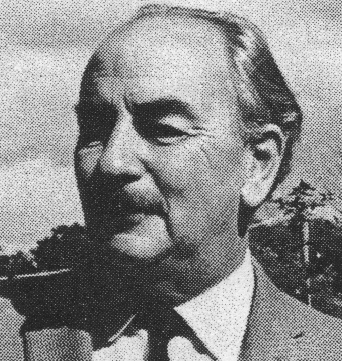 | |
| Howard Garnet Alsop, architect |
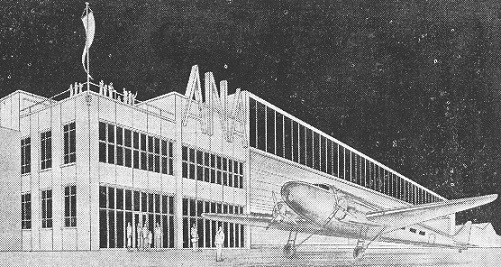 | |
| ANA Terminal & Hangar, Essendon Aerodrome (1938) |
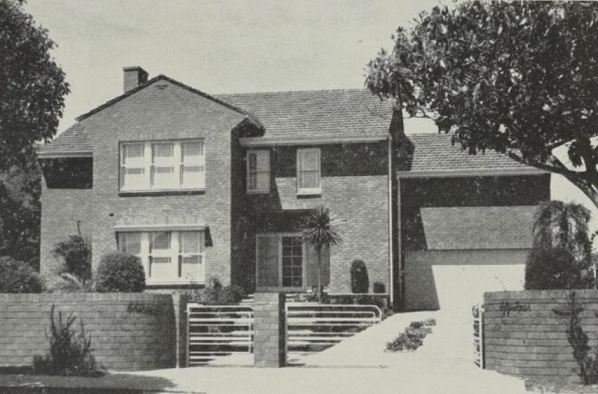 | |
| Residence at Strathfield, NSW (1941) |
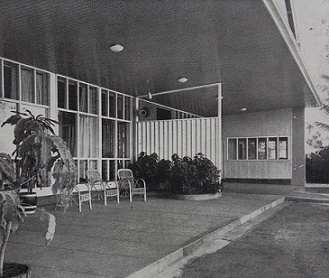 | |
| ANA Passenger Terminal, Cairns Aerodrome, QLD (1954) |
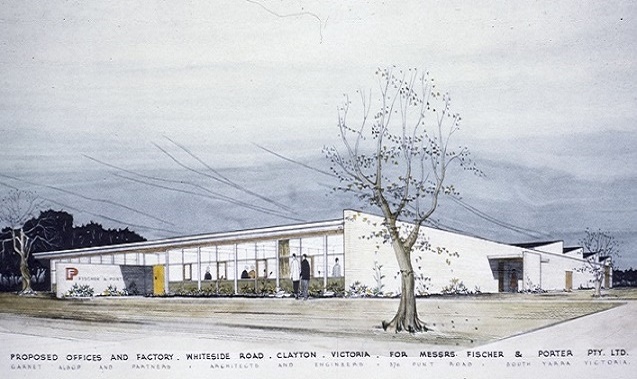 | |
| Factory and offices for Fischer & Porter, Clayton (1964) (source: Picture Collection, State Library of Victoria) |
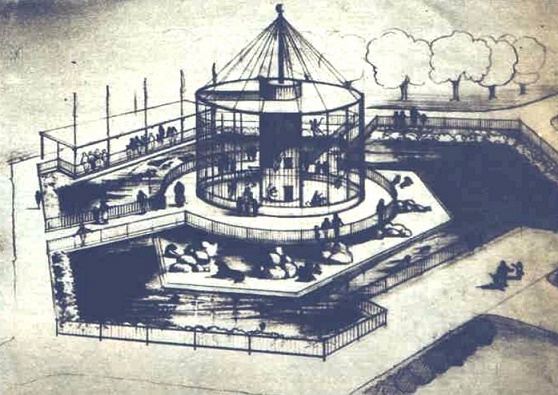 | |
| Seal pond and monkey house, Melbourne Zoo (1966) |
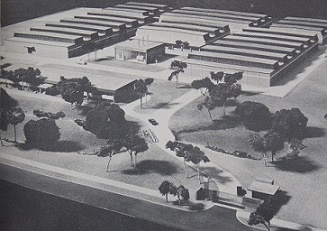 | |
| Factory for Bekaert Pty Ltd, Lyndhurst (1970) |
top
